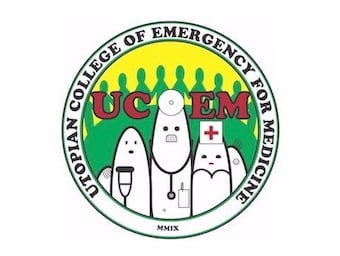
Hyperbaric Oxygen Treatment
Hyperbaric Oxygen Therapy. Carried out in a pressurised chamber (single or multiple patients). Treatments typically between 2 and 3 ATA

Hyperbaric Oxygen Therapy. Carried out in a pressurised chamber (single or multiple patients). Treatments typically between 2 and 3 ATA

Cryptogenic Organising Pneumonia (COP) is also known as bronchiolitis obliterans organising pneumonia (BOOP); not the same as bronchiolitis obliterans; the rapidly progressive form has a very poor prognosis

The LITFL Critical Care Compendium (CCC) has numerous entries on sepsis, this page collates them

The patient's form a heterogeneous group that requires a systematic approach based on early resuscitation where needed, risk assessment to guide further management and early consideration of the underlying psychosocial issues.

A 30 year old man describes hearing and feeling a snap on the right side of his penis during intercourse. He developed sudden severe pain, rapid detumescence, and then swelling and bruising to the right side of the penile shaft.

AKI is the entire spectrum of disease (mild -> severe), and can be defined as an abrupt (1 to 7 days) and sustained (more than 24 hours) decrease in kidney function. Mortality of critically patients with acute renal failure is high (50%–60%)

Acute kidney injury (AKI) is a common problem in the critically ill associated with increased morbidity and mortality

AKI can be defined as an abrupt (1 to 7 days) and sustained (more than 24 hours) decrease in kidney function. The ADQI formulated the RIFLE criteria in 2004 to allow for AKI to be objectively and uniformly defined.

Renal Transplant; commonest transplant; anastamosed to common iliac artery and vein in the pelvis. the ureter is plumbed into the bladder; allows ease of access for palpation and biopsy

APACHE = Acute Physiology, Age and Chronic Health Evaluation (I-IV); SOFA = Sequential Organ Failure Assessment

Scoring systems commonly used in ICU: GCS; TISS; APACHE; SAPS; MPM; POSSUM; EuroSCORE; MELD and SOFA

Found who are the latest esteemed practitioners of Utopian Medical Ideals to be elevated to the status of Fellow of the Utopian College of Emergency for Medicine due to their meritorious suggestions for the best uses of a bougie.